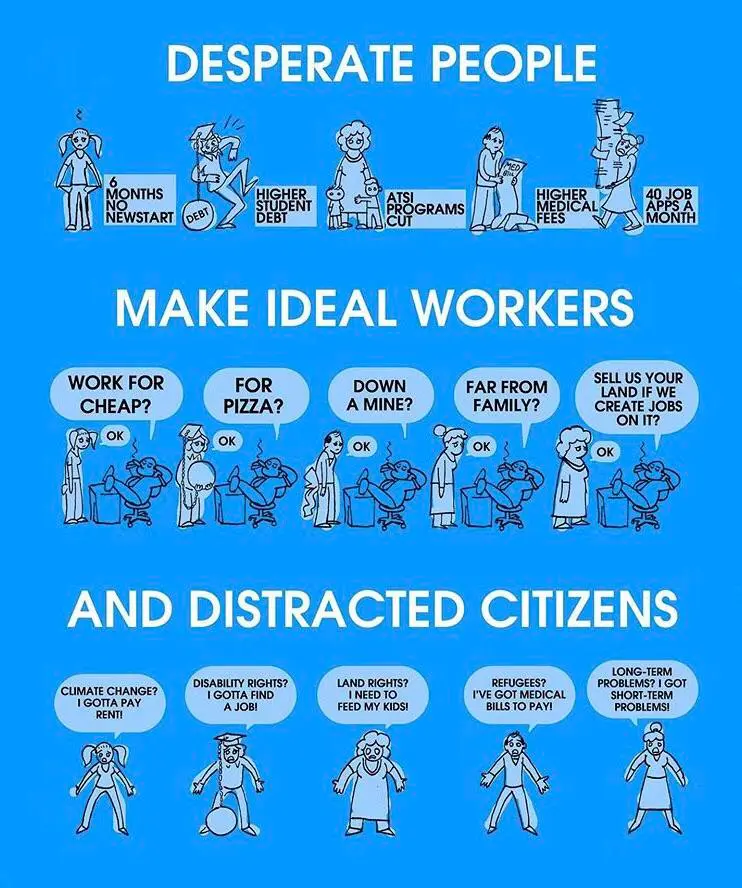Haha, I figured it was 50/50 on whether I would get this comment or something about the ASCII representation of the letter A
- 0 Posts
- 23 Comments
Pi is an infinite series of non-repeating digits, and yet you will never find the letter A in pi because there is a 0% chance of the letter A being a digit in a decimal system. By the same logic, infinite possibilities do not guarantee that every conceivable state occurs, if that conceivable state has a 0% probability. As finite beings, it is very difficult for us to accurately distinguish between a 0% probability and a infinitesimal probability, so we end up circling back to “we don’t know”
Buses and trains. That, or spaghetti interchange that are bigger than the rest of the city. Also, replace key arterial roads with a pedestrian path, call that path a park, and charge $20 for entry. That will easily fund all the city services and nobody will be too inconvenienced by having to pocket their car as they walk across the “park” to get between neighborhoods. Now excuse me, I have to go murder a little blue bird that won’t shut up about the garbage piling up
New study suggests dogs capable of celestial navigation: “Columbus was a sucker for using an astrolabe when he could have just brought along a good boi and watched him shit”
Oh god, converting imperial kHz to metric kHz sounds awful

 11·3 months ago
11·3 months agoThe monkeys paw curls, everyone now has to drive from the perspective of a back seat passenger looking over the driver’s shoulder
Based on the Wikipedia article on biological immortality referencing species that live for a couple hundred years and the Wikipedia page on armillaria ostoyae mentioning living specimens that are multiple millenia old (and thousands of acres large!), I’m guessing that may be what the prof is referring to?

 64·8 months ago
64·8 months agoBlizzard: willfully engage in a business model that manipulates players into constantly looking for the next thing, and structures their games around that model to drive sales of microtransaction
Blizzard’s Player Base: fills with people responding to that manipulation
Blizzard:
People who work with naval nuclear reactors, so the supercarriers and the submarine force. The US Navy is the largest US-based nuclear power plant operator, by reactor count

 8·9 months ago
8·9 months agoI hate to break it to you, but Russia crossed that particular Rubicon at Bucha and so many other places already. So first place is already taken

 71·9 months ago
71·9 months agoI reinforced Reagan’s precedent that workers’ right to strike is contingent on the effect to the economy that the strike would have, which is a blow to the strength of unions and to the possibility of a general strike, regardless of the results achieved for this set of workers. Not to mention that we don’t know if the unions could have got an even better deal if they had successfully engaged in the strike. Making good on his word helps to soften the blow, but it doesn’t erase it entirely

 31·10 months ago
31·10 months agoThere is a net loss of potable water (or potable water capacity, if you prefer), which is often a capacity bottleneck before non-potable water due to the infrastructure required to generate it. However, according to a comment above, Microsoft is using evaporative coolers, which specifically work by losing water (through evaporation). It’s not a 100% loss rate to the watershed, but it’s not net zero either
I’m assuming that is just their Dutch site. Kind of like bbc.com

 33·10 months ago
33·10 months agoLast one in Europe other than those two. Georgia, Azerbaijan, Kazakhstan, China, Mongolia, and North Korea all remain in Asia. None are likely to join NATO anytime soon. Georgia may be the most likely, but they have the same problem with outstanding Russian occupation that Ukraine has/had going into 2022. Azerbaijan is aligned with Turkey, who is a NATO member, but does not have contiguous borders with NATO. Kazakhstan has distanced itself from the Ukraine invasion, but is otherwise more similar to Belarus than Finland in terms of alignment. China and North Korea have nukes. Mongolia is up shit creek without a paddle hoping that China and Russia continue to rival each other enough to not want the other to expand into Mongolia really

 4·11 months ago
4·11 months agoIt is a very solvable problem, and mechanical or thermal batteries are likely to be at least part of the solution. Of the three kinds of gaps/shortfalls that grid storage would have to cover, the milliseconds-long and hours-long gaps are probably the easiest to solve. The days-long gaps (stretches of cloudy days, low winds for extended periods) is probably the most expensive to solve, but even those are not really that difficult (hydro storage is a tested technology that works well and HVDC transmission linking regions together can allow local shortfalls to be covered by remote surpluses). It’s all more a matter of building capacity than needing new technology to solve an unsolvable problem, from what I understand

 3·11 months ago
3·11 months agoPowering a couple appliances for a few hours is nothing for a car battery, those things are huge and powerful because cars are so inefficient. That’s not to say that V2G or V2X will work perfectly for everybody, but with the average commute around 25 miles and plenty of EVs out there over 200 mile range (which equates to mutliple days of typical electrical usage), there’s certainly some extra capacity. If you were compensated for the power you sold back at peak times, it could help justify paying for and lugging around the kind of battery capacity that is specced for your weekend/holiday road trips just to make your likely shorter daily commute. I’m using you generically, I don’t know your specific situation, so you certainly could be someone who would not feel a need to engage in that kind of scheme

 19·11 months ago
19·11 months agoThe issue isn’t really comparing high noon to midnight. The issue is comparing prices at either high noon (when supply is large) or midnight (when demand is small) to the space in between, especially dinnertime (when demand peaks just as solar supply finishes tailing off). There are ways to move some of that peak into noon (e.g: if homes are well insulated, they can be cooled or heated while solar is still up and used as a thermal battery to at least bridge over to the nighttime hours), but some of the peak is much harder to shift around. If everybody starts cooking and turns on the television around dinnertime, the only way to distribute that is to stagger dinnertime, which is easier said than done for a lot of people’s schedules. Having power storage to bridge that gap (wouldn’t it be nice if everyone that has an electric car got home and used whatever range they had leftover in their battery to absorb their extra demand and then start charging again at nighttime rather than immediately start charging at the worst time of day. Or having solar plants that store excess daytime power in thermal, hydro, or chemical batteries to discharge and increase supply later) is likely easier than convincing enough people to work odd shifts or delay their after work leisure activities

 18·11 months ago
18·11 months agoOP is from sigmoid.social according to the profile, and that is a mastodon instance. They tooted on Mastodon with the correct @ mention of the community, resulting in the toot showing up as a post in this lemmy community. We can reply to and interact with this specific post, although I’m not sure how it shows up to a mastodon user, seeing as the front end is quite different. We are unable to interact with Mastodon toots that aren’t tagged in a way that tie them to a Lemmy community and create a correlating post

 2·11 months ago
2·11 months agoBut the deniers mentioned in the article are in the UK, hence the relevance




This makes one of the “solutions” from the article: “A law was introduced at the end of 2023 that will eliminate the need for permits and environmental impact assessments for bridges that are being widened to add lanes as part of renovations.” look particularly shortsighted. Infrastructure is a maintenance debt that we are reckoning with, so we will make it easier to build specifically bigger infrastructure so that in 25 years we will have an even bigger problem to solve? Not to mention the concept of induced demand meaning that those lanes are going to increase the amount of vehicles using the bridge, which would be exactly the kind of thing that should get an environmental assessment, versus repurposing some lanes for sustainable transit or building a separate bridge for those modes